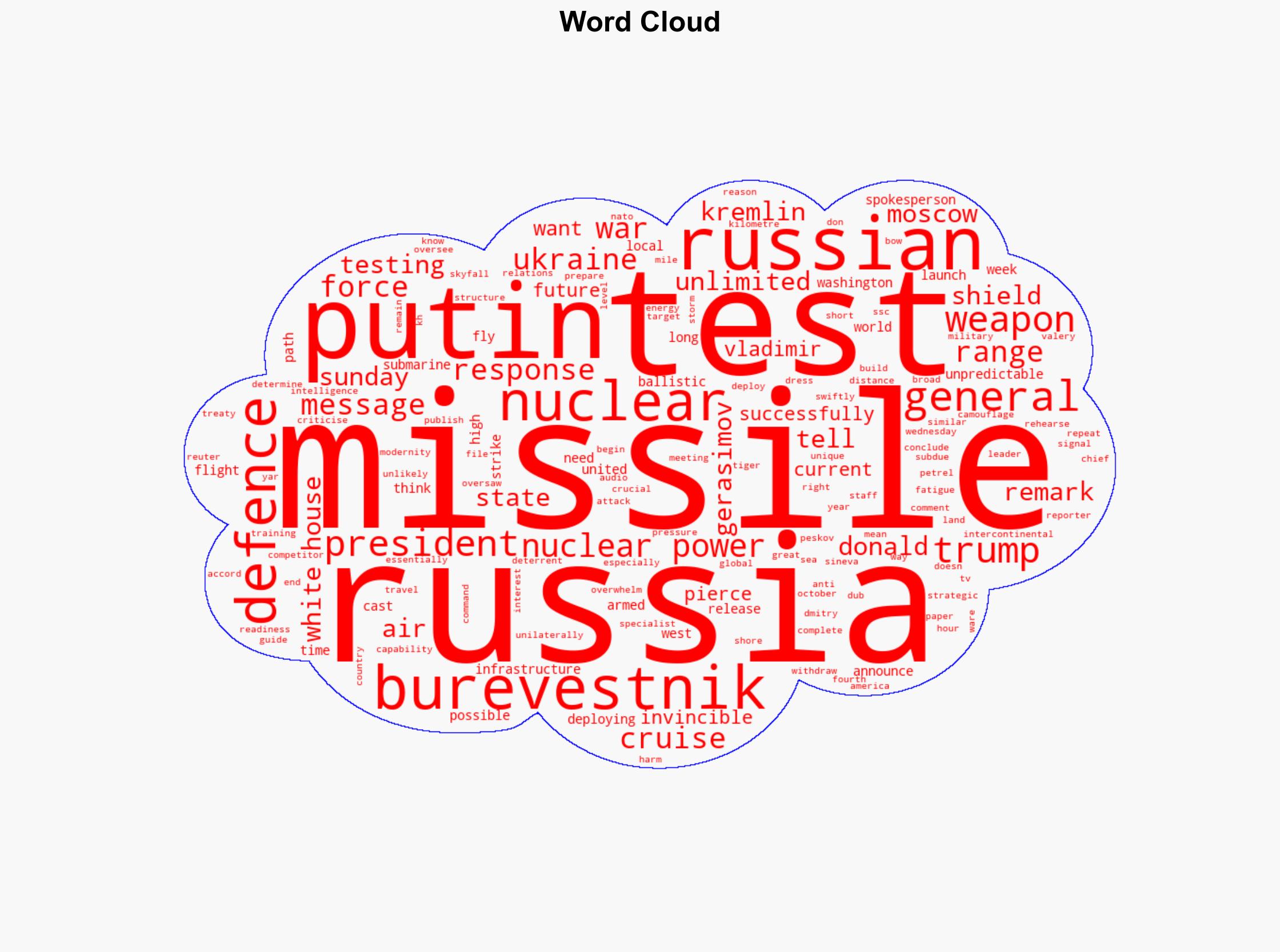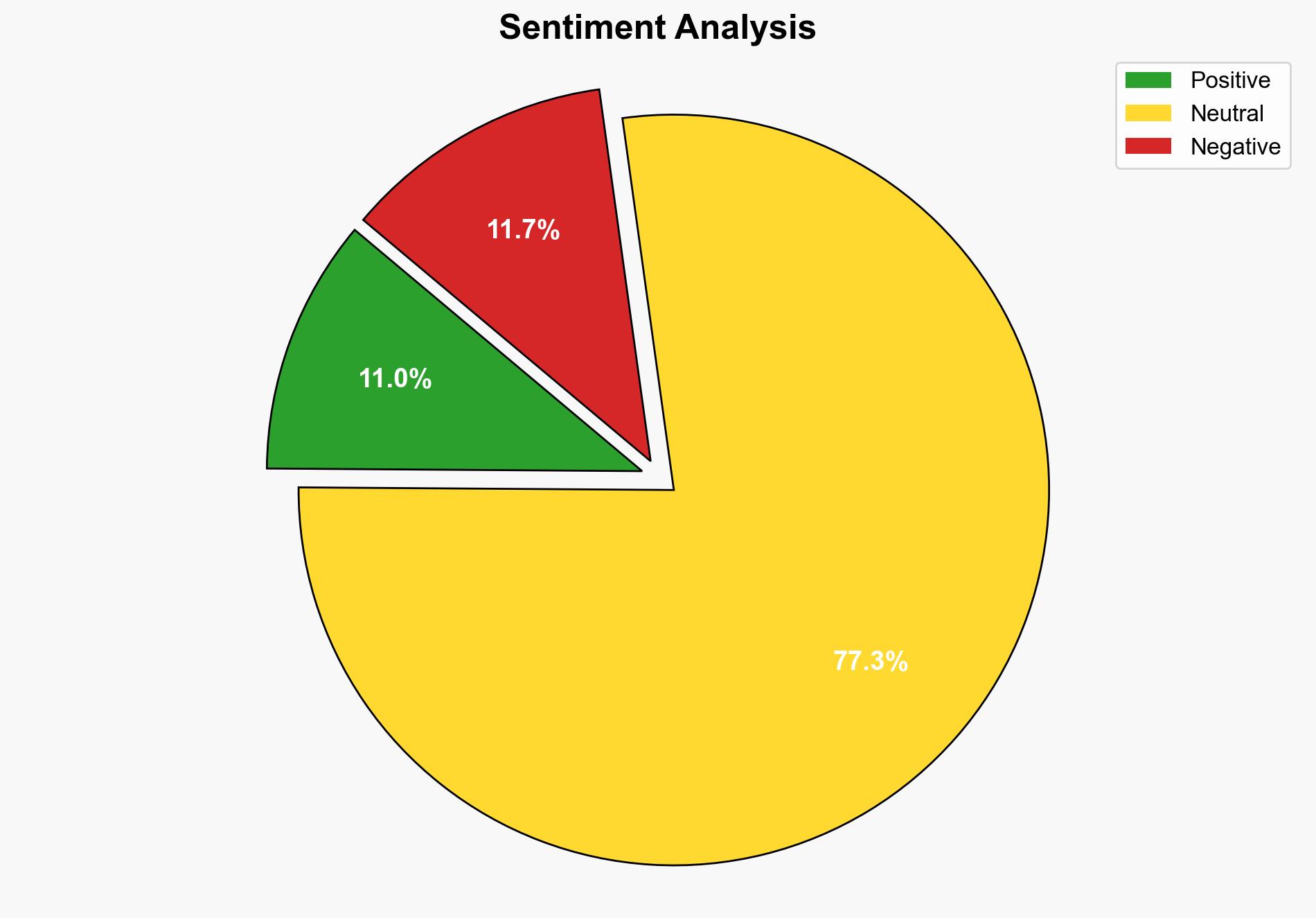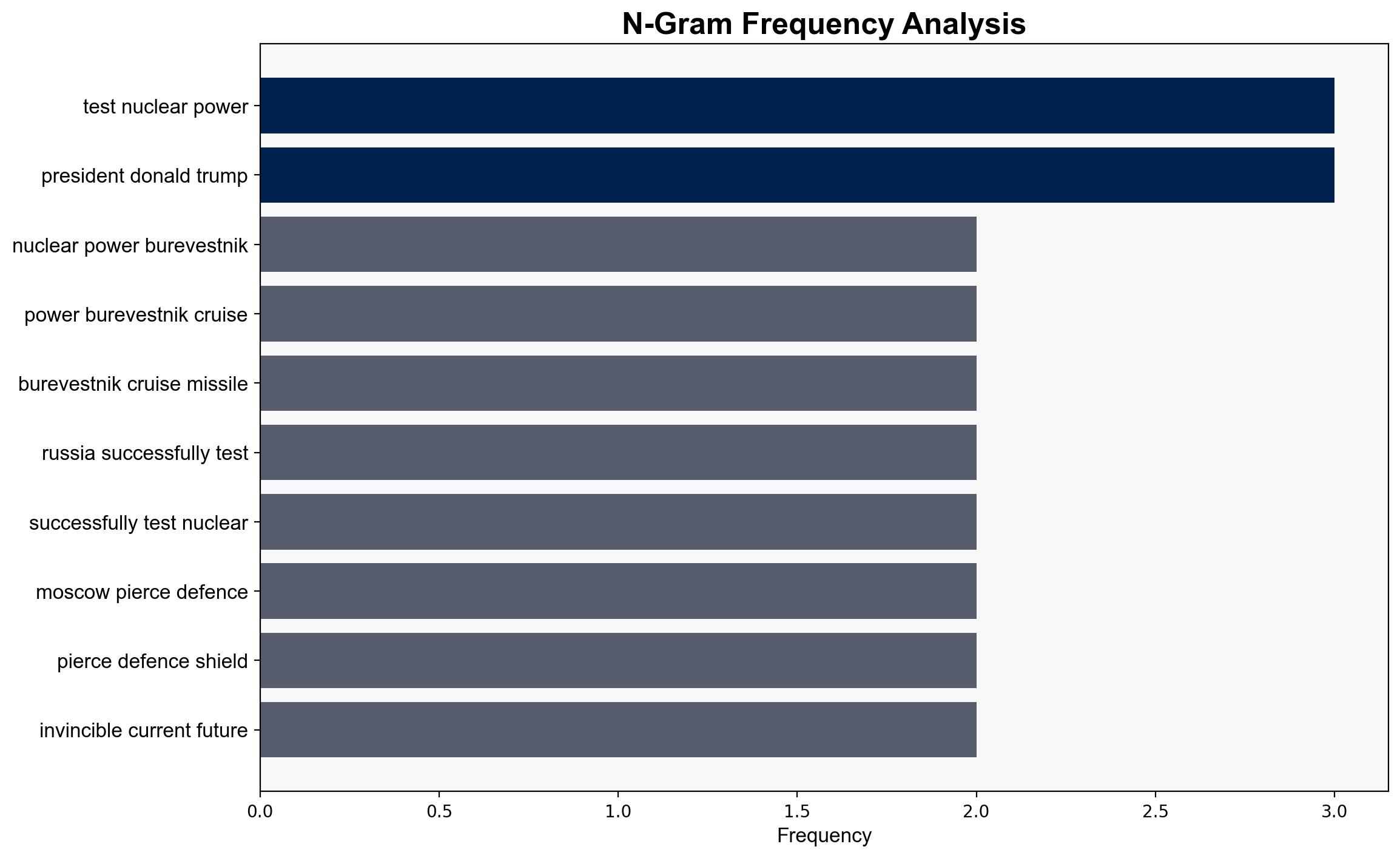Russia tests nuclear-powered cruise missile and Putin wants to deploy it – ABC News (AU)
Published on: 2025-10-27
Intelligence Report: Russia tests nuclear-powered cruise missile and Putin wants to deploy it – ABC News (AU)
1. BLUF (Bottom Line Up Front)
The strategic judgment is that Russia’s testing and potential deployment of the Burevestnik missile is a significant development in global military dynamics, with a medium to high confidence level. The hypothesis that Russia is using this missile development as a strategic deterrent against Western missile defense systems is better supported. Recommended action includes increased diplomatic engagement and bolstering missile defense systems.
2. Competing Hypotheses
1. **Hypothesis A**: Russia is advancing its nuclear-powered cruise missile capabilities primarily as a strategic deterrent to counteract Western missile defense systems and assert its military prowess.
– **Supporting Evidence**: Statements from Russian officials highlight the missile’s ability to penetrate defense shields and its unlimited range, suggesting a focus on deterrence.
– **SAT Applied**: Cross-Impact Simulation indicates that this hypothesis aligns with Russia’s historical military strategy and recent geopolitical tensions.
2. **Hypothesis B**: Russia’s missile tests are primarily a domestic propaganda tool to bolster national pride and distract from internal challenges, such as the ongoing conflict in Ukraine.
– **Supporting Evidence**: The timing of the announcement and emphasis on the missile’s invincibility could serve to rally domestic support.
– **SAT Applied**: Bayesian Scenario Modeling suggests this hypothesis is less likely given the broader strategic context and international reactions.
3. Key Assumptions and Red Flags
– **Assumptions**: Hypothesis A assumes that Russia’s military developments are primarily aimed at external threats rather than internal political gains. Hypothesis B assumes that domestic factors are the primary motivators for military advancements.
– **Red Flags**: Lack of independent verification of the missile’s capabilities. Potential cognitive bias in interpreting Russian statements as purely strategic without considering internal factors.
– **Deception Indicators**: Possible exaggeration of missile capabilities to influence international perception.
4. Implications and Strategic Risks
– **Geopolitical Risks**: Escalation of arms race dynamics, particularly in Europe and Asia. Potential strain on existing arms control agreements.
– **Economic Risks**: Increased defense spending by NATO countries in response, impacting economic priorities.
– **Cyber and Psychological Dimensions**: Potential for increased cyber espionage and information warfare targeting missile defense systems and public perception.
5. Recommendations and Outlook
- Enhance diplomatic efforts to engage Russia in arms control dialogues to prevent further escalation.
- Strengthen missile defense systems in Europe and Asia to counter potential threats.
- Scenario Projections:
- **Best Case**: Successful diplomatic engagement leads to renewed arms control agreements.
- **Worst Case**: Escalation into a broader arms race with increased regional tensions.
- **Most Likely**: Continued testing and deployment, with periodic diplomatic tensions.
6. Key Individuals and Entities
– Vladimir Putin
– Donald Trump
– Valery Gerasimov
– Dmitry Peskov
7. Thematic Tags
national security threats, geopolitical tensions, arms race, missile defense




